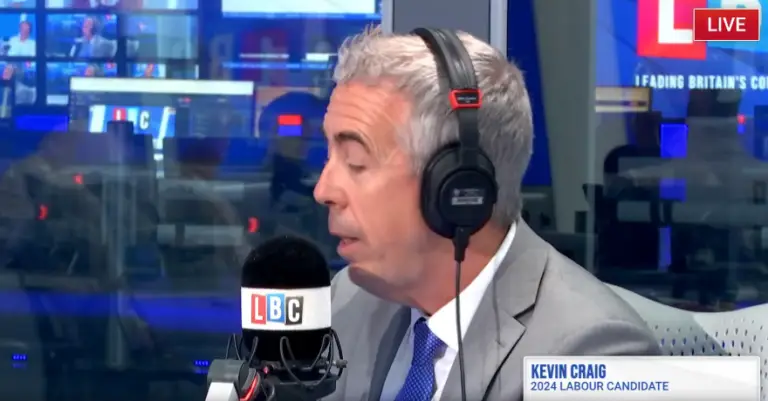The SNP have failed to win a majority, but how much of a blow is that to the party, and to the argument for Scottish Independence?
The answer is, not much. Winning a majority in the Scottish Parliament is almost impossible to achieve by design. The voting system was engineered specifically to prevent majority Governments – to deliver more proportional representation, give voice to smaller parties and to promote compromise amongst parties. In the words of Nicola Sturgeon “a majority was always a long shot”.
The fact that Westminster-based commentators focussed so much on the achievement of a majority during the campaign and vote count arguably says more about Westminster’s failure to understand Scottish politics, than any failure on the SNP’s part to win the election.
Let’s be clear, the SNP are Scotland’s largest party, adding another five years to an unprecedented fourteen-year stint in power. In the constituency vote, which runs on a First Past the Post voting system, the SNP gained two seats, one from Labour and one from the Conservatives, and received 48% of the votes. To put this into context, if the Scottish Parliament used Westminster’s voting system this result would give the SNP 85% of all the seats.
Even in the list vote, which uses the additional member system and is designed to benefit smaller parties, they received 41% of the vote, equalling their performance in the last election despite a concerted campaign by The Alba Party to take votes from them.
Make no mistake, the SNP is still the dominant party in Scotland, and the argument already being touted by some – that their failure to gain a majority should put the question of a second independence referendum to bed – simply won’t wash with Scottish voters, no matter how often London based politicians stress the point.
That’s because the Scottish Parliament itself has a pro-independence majority, with 72 pro-independence MSPs elected in comparison to 57 pro-union MSPs. The Scottish Greens, who will once again take up their previous role as the party that lends votes to the SNP in order to pass legislation, ran on an explicitly pro-independence manifesto. It would be very difficult to convince increasingly politically savvy Scottish voters that, in a system designed to promote the voices of these smaller parties, they should simply ignore their mandate because they are not part of the largest party. If, as some predict, the SNP decides to enter a formal coalition with the Scottish Greens, the argument will be diluted even further.
So what does this mean for the next five years of an SNP Government?
The most obvious answer is that the question of Scottish independence isn’t going away. The SNP will be emboldened by this result not defeated, and rhetoric around the constitution will no doubt ramp up. But don’t expect an independence referendum any time soon – Nicola Sturgeon has been clear that she sees the Covid-19 recovery as her main priority, ironically agreeing with the UK Government that “now is not the right time for another referendum”, albeit for very different reasons. That said, the SNP will be working hard behind the scenes to get Scotland ready for another vote, perhaps beginning with the rule that says the UK Government must grant Scotland permission to hold a legally binding referendum. This has never been tested in court, and with the Prime Minister clear that he won’t be granting Scotland permission anytime soon, expect a court case to be touted in the near future.
Secondly, don’t under-estimate the power of the Scottish Greens. With the SNP two seats short of a majority, the Scottish Greens are now the power brokers in the Scottish Parliament. They have achieved big concessions in votes like the Budget before and are likely to do so again in the next Parliament, even if they don’t enter into a formal coalition. For anyone looking to engage with the SNP, the Greens should be next on your list.
And finally, despite a fairly disappointing showing, don’t discount Scottish Labour. After a decade of decline in Scotland, and while it didn’t translate into votes this time, new leader Anas Sarwar has proven himself a force to be reckoned with during the campaign. His personal popularity rating sits at 41% in comparison to his counterpart in the Scottish Conservatives, Douglas Ross, who sits on 18%. Sarwar will be looking forward to rebuilding the reputation of Scottish Labour over the next few years, proving his ability as leader and as a member of the opposition, and eyeing the next election where he’ll hope to overtake the Scottish Conservatives as Scotland’s second largest political party. To do this, he’ll have to grapple with what Scottish Labour stands for – are they simply a party for the Union, or can they seize the narrative and reposition themselves as a party for the working class which includes independence voters?
And as for Douglas Ross, he’ll be hoping that his new seat in the Scottish Parliament will allow voters to see him as more than the referee politician and Ruth Davidson’s understudy and hoping that his increased visibility will improve his popularity amongst voters so the Scottish Conservatives can remain the second largest party and continue in its position as the party for the Union.





